Since President Abdel Fattah El Sisi came to power in 2014, he is determined that Egypt move forward with the sustainable growth plan Egypt’s Vision 2030 in order to sharpen Egypt’s competitive edge at regional and global levels.
President Sisi has given special attention to civil aviation as one of the most important sectors for reinvigoration to put Egypt back on the world tourism map.
Aviation is one of the keys to economic development as a facilitator of foreign and domestic tourism, resources development, and support for the national economy.
Airports
Airports have been developed and new airports opened. Air traffic control systems has been upgraded and security improved. Egypt’s civil aviation sector now ranks high among international companies. Egypt has 27 international and domestic airports, handling 30 million passengers a day. Marsa Allam and Alamein are on the Build Operate and Transfer (BOT) system.
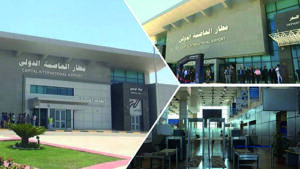
New Capital International
The International New Capital Airport was open in July 2019. Egyptian expertise and national contracting firms built the 16-square-kilometre airport to the highest international standards. Located in the Katameya area of New Cairo, a few kilometres from the NAC and 30km east of Cairo International Airport, the new airport has direct highway connections to Cairo and Suez.
Berenice International
In January 2019, President Sisi opened Berenice International Airport that connects Cairo and the southern cities. The airport has been instrumental in reviving tourist movement to Red Sea resorts such as Marsa Allam. The LE430 million airport recently received its first EgyptAir aircraft with 60 passengers on board. The airport consists of a 3,650-metre-long, 60-metre-wide corridor. The apron can accommodate eight aircraft and the terminal can handle 600 passengers per hour.
A 58-metre-high tower surveys the airport with its 47 technical, administrative and service buildings.
Navigation system upgrade
To make air navigation more efficient, high-tech satellite and radar network have been established. The sector has attached importance to developing the country’s control towers along with mega-projects over recent years to modernise and upgrade Egypt’s international airports to cope with increase in air traffic, provide higher quality services in compliance with ICAO standards.
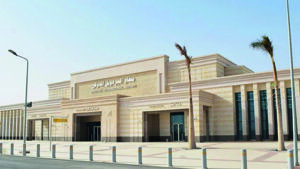
Cairo expansion
The Cairo International Airport, one of the biggest airports in Africa, has undergone expansion and development work, which includes a VIP terminal, a new baggage system in Terminal 3, an electric walkway connecting Terminal 2 to the multi-story car park, and a new perimeter fence. A new 231,000-square-metre Terminal 2 was opened at Cairo International Airport costing of LE3.4 billion. The new terminal will handle 7.5 million passengers per year, bringing the airport’s total annual capacity to 30 million. EgyptAir’s fleet has been renewed and contracts concluded for the purchase of nine Boeing B737-800NGs.
St Catherine, South Sinai
St Catherine Airport has undergone development in order to attract more tourists to this picturesque area. The airport has been doubled in area, enabling it to handle more nighttime arrivals and departures.
“The St Catherine region has religious sites for all three of the monotheistic religions, making it an important destination for international tourism,” Minister of Aviation Mohamed Manar said.
Venue for regional, int’l events
Important regional and international events in civil aviation have been held during the last seven years. The Regional Ministerial Conference on Aviation Security in Africa and the Middle East was organised in Sharm el-Sheikh and the 25th African Civil Aviation Commission (AFCAC) General Assembly was hosted by Cairo for the first time in 2015. Egypt was also the venue for the ACI Africa Regional Conference and Exhibition in 2016.
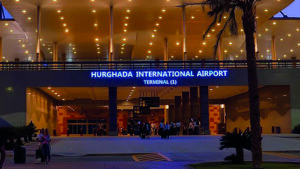
Sharm, Hurghada, Sphinx airports
Airports at Sharm el-Sheikh and Hurghada have been developed and expanded in anticipation of greater tourist numbers. Sharm el-Sheikh’s annual handling capacity will be raised from 7.5 million to 9.5 million. After redevelopment, 11.5 passengers a year will pass through Hurghada, compared to 9.5 million today.
Chairman of the Egyptian Holding Company for Airports and Air Navigation, Mohamed Saeed Mahrous, said ongoing airport development work continued on schedule despite the coronavirus pandemic.
October 2018 saw the trial operation of LE300 million Sphinx Airport in 6 October City. Its first international arrival was in February 2019. Sphinx Airport, which stands on 25,500 square metres, is intended to relieve pressure on Cairo International Airport. Hourly capacity here has been increased threefold to 900 passengers per hour (2 million a year). The airport’s full opening will coincide with the inauguration of the Grand Egyptian Museum. Due to its strategic location, many airlines have requested to operate flights to and from the airport, for which approval has been postponed until expansion work is complete with the construction of four bridges connecting departure and arrival halls with aircraft.
The civil aviation sector has plans for a global cargo village here.
Terminal museums
Minister of Tourism and Antiquities Khaled el-Enany and Minister of Civil Aviation Mohamed Manar recently opened museums in Terminals 2 and 3 at Cairo International Airport to promote cultural tourism in Egypt.
El-Kharga airport
After decades of neglect, parkland around el-Kharga airport in the Western Desert has been transformed into a solar-powered work of art. The 38-feddan (acre) site, offering boating and play areas, is to be developed for an estimated at LE400 million. Park illumination will come courtesy of solar panels. A 2,000-square-metre Bedouin entertainment tent stands the park entrance, to serve visitors with refreshments.
ISO certificate
Among the awards received by the aviation sector in the past seven years is ISO 9001/2015 for customer service, quality and environment. The Civil Aviation Ministry “displayed excellent performance”, applied modern methods of management and principles of scientific planning, and implemented quality standards across all departments, in line with Egypt’s Vision 2030 reforms.
Partnering with Africa
Strategic partnerships were concluded with some African countries over the past few years, which included the signing of memoranda of understanding to facilitate the movement between African countries and link them with the countries of Europe, the Middle East and Latin America.
A number of bilateral agreements were also signed with some brotherly African countries such as Sudan, South Sudan, Libya and Ghana in various fields and activities of air transport, including the transportation of passengers and goods, maintenance and training.
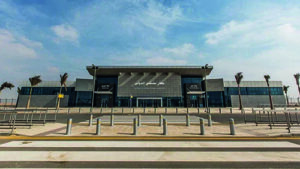
Air freight during coronavirus
Regarding the efforts of the Ministry of Civil Aviation in the field of air freight during the coronavirus outbreak, EgyptAir Cargo had an important role in transporting goods from Egypt to various countries of the world as it operated goods flights according to regular and irregular operating schedules to nearly 15 airports on the continent.
African countries have been linked with North America, Europe, Asia and the Middle East, where goods are transported on cargo planes and passenger planes as well.
The outbreak of the coronavirus pandemic has also witnessed a huge growth in air cargo traffic. The countries of the continent are also seeking to prepare the necessary infrastructure for this growth, from the establishment and development of airports, the development and doubling of freight capabilities, the application of electronic freight systems E-FRIEGHT and the increase in the fleet of national and private airlines of cargo planes.
This comes in addition to planning to establish a number of cargo villages in major African airports as per the latest global models.
The aim is to increase investment in the field of air freight and double the share of the African continent in global trade in addition to offering reductions and facilities to the process of transporting goods between African countries.
This contributes to increasing the volume of investment and diversification of economic resources in the continent.
Minister of Civil Aviation Mohamed Manar said that his ministry was working on developing an action plan that would improve air transport industry in the continent and deepen joint co-operation between the countries of the continent in order to stimulate investment in the field of civil aviation and launch joint initiatives to encourage inter-air movement and facilitate entry and exit procedures.
The minister also pointed to the importance of upgrading the human element in all civil aviation sectors by standardising and scrutinising selection processes, intensifying training and giving opportunities to promising elements for creativity and preparing young people well that qualifies them to lead the civil aviation sector in the future.



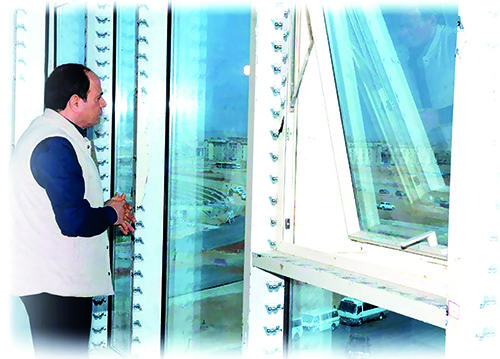


Discussion about this post